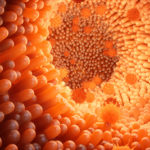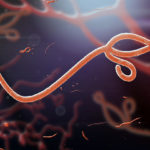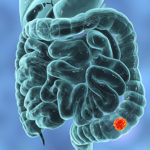Discoveries
Study explores the role of MYCN in Triple Negative Breast Cancer diagnosis and treatment
Sep. 10, 2020—By Mary Alice Keller The oncogene MYCN regulates cancer cell growth, proliferation, metabolism, and survival; tumors with increased MYCN expression are more aggressive. MYCN usually occurs in neuroendocrine tumors but can also occur in tumors of the reproductive system, including the prostate and ovaries. A Science Translational Medicine paper published earlier this year details new...
Vip1 allows cells to adapt to changing conditions
Aug. 28, 2020—By Francisco Rodriguez The class of signaling molecules known as inositol diphosphates or PP-IPs affects cellular shape, nutrient sensing and many other biological processes among organisms as simple as yeast and as complex as mammals. PP-IP levels—and thus their signaling power—within a cell depend on the activity of kinases, which create PP-IPs by adding a...
Non-neutralizing antibodies from a Marburg infection survivor show therapeutic potential
Aug. 28, 2020—By Sohini Roy Marburg viruses cause a hemorrhagic fever in humans, with a fatality rate of up to 90 percent. Currently, Marburg disease can neither be prevented by a vaccine nor therapeutically treated. Understanding how the immune system of a MARV survivor reacts against the virus can yield clues to design a treatment. With this...
STING pathway stimulation promotes survival in preclinical models of neuroblastoma
Jul. 16, 2020—By Sohini Roy Neuroblastoma, an aggressive pediatric brain cancer with a high mortality rate, boasts a unique microenvironment that puts the brakes on infiltrating immune cells and dampens their anti-tumor activities. Clinicians use a therapy called immune checkpoint blockade to activate a patient’s immune cells to recognize and attack malignant cells in many types of...
Two is Better Than One: Combatting the Ebola Virus
Mar. 26, 2020— By Sarah Glass Many people associate Ebola with the previous viral epidemic of the last decade, but, especially in light of the current global SARS-CoV-2 pandemic, few are aware that there is currently an active outbreak occurring in the Democratic Republic of the Congo. This deadly virus continues to wreak havoc in Africa, where...
Study explores link between cholesterol metabolism and environmental toxicants
Mar. 23, 2020— By Stella Child In the last two decades, scientists have found increasing evidence for the contribution of environmental factors to neurodegenerative diseases. Organic solvents, heavy metals, and air pollutants are now all categorized as neurotoxicants, substances that affect the function of the nervous system. A subset of these is a group of substances called...
The tale of the targeted mouse
Feb. 13, 2020—By Sarah Glass Researchers from the labs of Robert Coffey (Medicine) and Jacob Houghton (Radiology and Radiological Sciences) report in Gastroenterology the identification of two human antibodies, P1X and P2X, that can neutralize EGFR in mice. EGFR, or epidermal growth factor receptor, contributes to cancer progression by increasing the signaling of pathways related to...
Setting Up DNA Repair
Feb. 6, 2020—By: Alexandria Oviatt Published: February 6, 2020 A recent Nucleic Acids Research paper from the lab of Walter Chazin (Biochemistry) reveals key interactions in a DNA repair pathway called nucleotide excision repair (NER) that may have implications for the treatment of the genetic disorder xeroderma pigmentosum (XP). Individuals burdened with this disease have mutations in...
Breaking up MYC-WDR5 to counter cancers
Feb. 4, 2020—By Suneethi Sivakumaran Cancers are complex and diverse in nature, assailing the human body through different mechanisms. Cancer cells outsmart normal cells through myriad mechanisms, including sustained proliferation, insensitivity to growth suppressors, and resistance to cell death. MYC is a transcription factor (it regulates the expression of other genes) that plays important roles in human...
Receptor modulators chart new courses out of depression
Feb. 4, 2020—By Amanda N. Johnson Existing drug treatments relieve mental illness for some people, but fall short of providing a full recovery for many others. One goal of neuroscience research is to find new ways to modulate brain activity so that more patients experience freedom from poor mental health. The laboratories of Craig Lindsley (Pharmacology), Danny...









